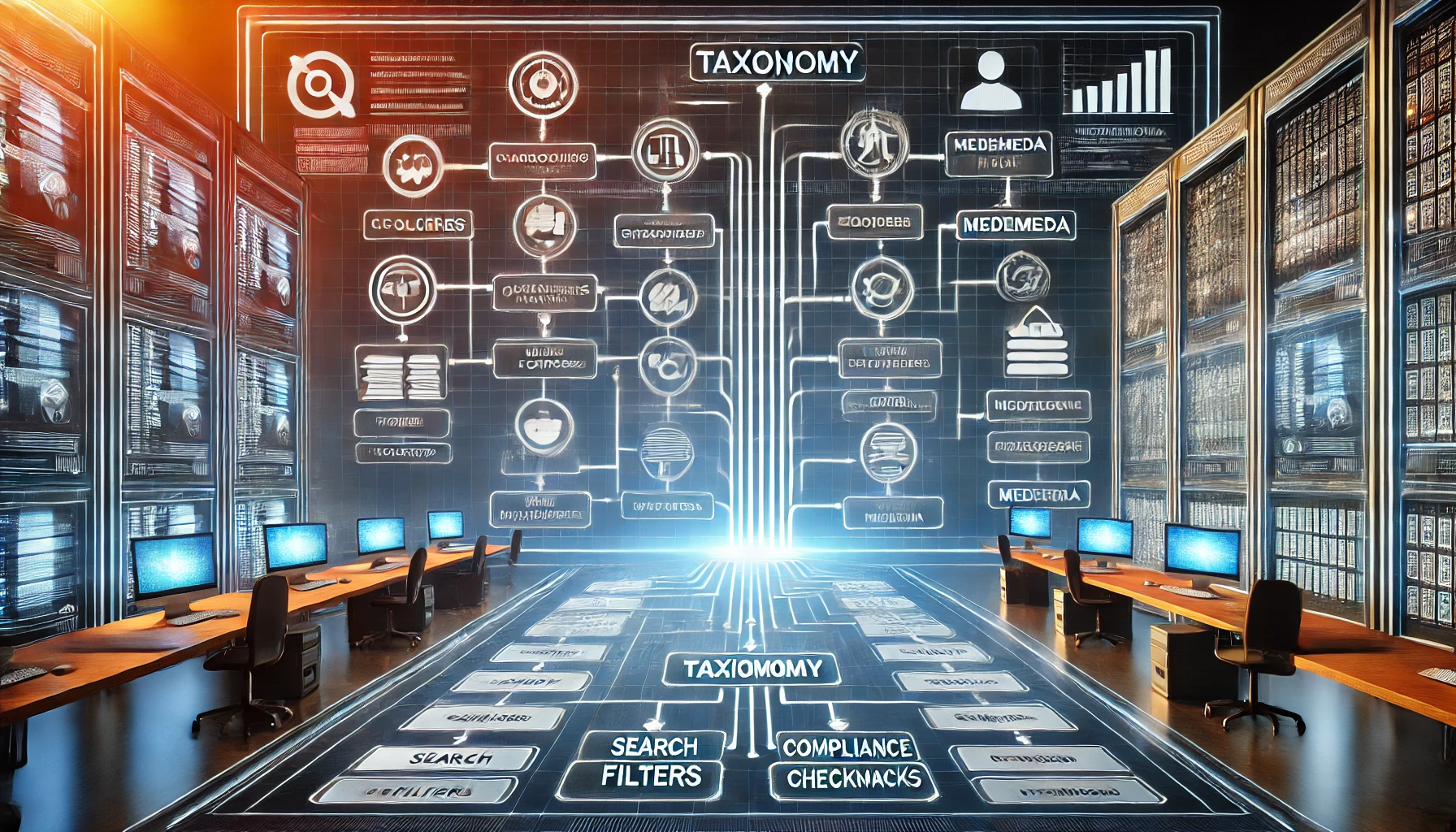AI
AI
Jul 20, 2024
Jul 20, 2024
AI-based Auto-tagging of Content: An Innovative Way to Tag Media



Summary
AI (Artificial Intelligence) has generated significant interest among organizations aiming to utilize the technology for growth. Auto-tagging, a subset of AI, is also drawing considerable attention. This blog explains the utilities and benefits of AI-based auto-tagging of content.
Tagging involves attaching keywords to content, media, or other items to make them easier to search and retrieve. In today’s digital world, tags help people and machines understand the context of content pieces.
Tagging is crucial in content management as it allows for efficient organization, retrieval, and utilization of content by attaching meaningful keywords or phrases. Implementing effective tagging strategies can greatly improve the efficiency of content management systems and enhance overall digital asset management.
Tags are specific words associated with the content that define its identity. Proper tagging is crucial; without it, finding the right content can be challenging. AI auto-tagging offers a more effective way to add tags to content. By incorporating AI auto-tagging, organizations can greatly improve their content management processes, resulting in better organization, retrieval, and use of their digital assets.
What is AI-based Auto-tagging?
AI-based auto-tagging is an innovative technology that provides an advanced method for creating and assigning metadata tags to media files.
It uses artificial intelligence to create tags for media files using metadata. This modern approach generates keywords or phrases and assigns metadata tags to media assets, making content more easily discoverable when users are searching. These tags subtly influence online interactions, whether shopping, browsing media, searching websites, or navigating social media platforms.
By utilizing AI auto-tagging, organizations can significantly improve their digital content strategy, resulting in more efficient content management, enhanced user engagement, and better overall performance of digital assets.
The Types of Content That Can Be Auto-tagged
Auto-tagging can be used with both text and images, though the procedure for tagging images differs from that for texts.
Categorize Sources of Text Content
Published texts can come from different sources, either internal or external. Internal sources may include content created by authors within the organization, with metadata tags added as part of the workflow. In auto-tagging, the software automatically adds tags after evaluating the text.
External sources can include user-generated texts, like feedback and reviews from consumers. For instance, e-commerce vendors might attach tags to product reviews that emphasize comments on durability, convenience, or satisfaction. These texts don't have a specific workflow, making automated tagging particularly useful. AI automated tagging instantly adds labels that customers can use to organize reviews based on their interests.
Images Can Benefit from Auto-tagging
Images without tags or labels can be hard to find. It's almost impossible to search for an image without a tag, especially when similar images are difficult to distinguish. The face and object recognition methods in AI help identify the content of an image, including people, locations, settings, objects, and colors.
AI has made auto-tagging possible for audio and videos, but its application is limited. AI software can recognize sectors and events, but most automated categorization relies on text descriptions and titles rather than the contents of the audio or video files.
How Auto-tagging is Done
Auto-tagging software matches content against expected semantic, rational, or mathematical profiles. Several technologies support auto-tagging:
Machine Learning (ML): Uses mathematical evaluation to find patterns that match recognizable properties.
Facial & Object Recognition: Analyzes the face and object from varying angles & perspectives for future tracking and identification.
Named Entity Recognition: Matches proper nouns found in text.
Semantic Analysis: Locates concepts referenced in the content.
Natural Language Processing (NLP): Analyzes and evaluates sentences to establish context.
Auto-tagging software usually depends on specific technologies. For image tagging, machine learning is commonly used. Different auto-tagging software requires training by displaying examples of correctly tagged content and then providing untagged content to see if it gets tagged correctly. When the software doesn't assign the correct tag, human intervention is needed to correct the tags by adding missing ones or deleting incorrect ones.
Text tagging can utilize different technologies and sometimes combines several to achieve reliable accuracy. However, it is rarely completely accurate. The degree of accuracy depends on efforts to correct inaccuracies. Several factors should be considered when evaluating the utility of an auto-tagging solution.
Explore AI in Broadcast: Accelerated Adoption blog for exclusive insights and updates on AI innovations and content management strategies!
Challenges in AI-based Auto-tagging
While AI-based auto-tagging offers significant benefits, it also presents challenges:
Mislabelling and Relevance: AI systems may misinterpret content or assign unrelated tags. Continuous fine-tuning and monitoring are required to improve tag accuracy.
Biases: AI tagging algorithms may reflect biases in the data they were trained on, resulting in biased tagging decisions. Strategies must be implemented to detect and mitigate these biases, ensuring fair and accurate tagging.
Ensuring consistent accuracy is challenging, especially with different types of content and languages. AI systems need to be adaptable and proficient in handling various content types, including text, images, videos, and audio in multiple languages.
How to Benefit from AI Auto-tagging
AI-based auto-tagging is becoming more common but is still in its early stages. To benefit from this technology, organizations may need an upfront investment and changes in their tagging approach.
AI-based auto-tagging allows organizations to scale down teams by manually tagging content. It helps manage massive archives cost-effectively and clarifies what content the organization has to offer. This opens the door to reusing and repurposing content that still resonates with audiences, saving production costs and increasing ROI.
Conclusion
The increasing popularity of AI has prompted organizations to incorporate the technology for content tagging. AI can streamline manual tagging processes and reduce the need for manpower. Automated tagging allows organizations to efficiently organize extensive content, making it reusable and adaptable for various audiences. Additionally, it facilitates the monetization of legacy content.
MediaGuru is a global service provider offering comprehensive content digitization and preservation solutions. Leveraging proprietary AI solutions, MediaGuru AI & Machine Learning service can transform your media content strategy through advanced machine learning and natural language processing techniques. The media asset platform automatically generates detailed metadata tags, optimizing content discoverability, minimizing manual effort, and maximizing media monetization.
Summary
AI (Artificial Intelligence) has generated significant interest among organizations aiming to utilize the technology for growth. Auto-tagging, a subset of AI, is also drawing considerable attention. This blog explains the utilities and benefits of AI-based auto-tagging of content.
Tagging involves attaching keywords to content, media, or other items to make them easier to search and retrieve. In today’s digital world, tags help people and machines understand the context of content pieces.
Tagging is crucial in content management as it allows for efficient organization, retrieval, and utilization of content by attaching meaningful keywords or phrases. Implementing effective tagging strategies can greatly improve the efficiency of content management systems and enhance overall digital asset management.
Tags are specific words associated with the content that define its identity. Proper tagging is crucial; without it, finding the right content can be challenging. AI auto-tagging offers a more effective way to add tags to content. By incorporating AI auto-tagging, organizations can greatly improve their content management processes, resulting in better organization, retrieval, and use of their digital assets.
What is AI-based Auto-tagging?
AI-based auto-tagging is an innovative technology that provides an advanced method for creating and assigning metadata tags to media files.
It uses artificial intelligence to create tags for media files using metadata. This modern approach generates keywords or phrases and assigns metadata tags to media assets, making content more easily discoverable when users are searching. These tags subtly influence online interactions, whether shopping, browsing media, searching websites, or navigating social media platforms.
By utilizing AI auto-tagging, organizations can significantly improve their digital content strategy, resulting in more efficient content management, enhanced user engagement, and better overall performance of digital assets.
The Types of Content That Can Be Auto-tagged
Auto-tagging can be used with both text and images, though the procedure for tagging images differs from that for texts.
Categorize Sources of Text Content
Published texts can come from different sources, either internal or external. Internal sources may include content created by authors within the organization, with metadata tags added as part of the workflow. In auto-tagging, the software automatically adds tags after evaluating the text.
External sources can include user-generated texts, like feedback and reviews from consumers. For instance, e-commerce vendors might attach tags to product reviews that emphasize comments on durability, convenience, or satisfaction. These texts don't have a specific workflow, making automated tagging particularly useful. AI automated tagging instantly adds labels that customers can use to organize reviews based on their interests.
Images Can Benefit from Auto-tagging
Images without tags or labels can be hard to find. It's almost impossible to search for an image without a tag, especially when similar images are difficult to distinguish. The face and object recognition methods in AI help identify the content of an image, including people, locations, settings, objects, and colors.
AI has made auto-tagging possible for audio and videos, but its application is limited. AI software can recognize sectors and events, but most automated categorization relies on text descriptions and titles rather than the contents of the audio or video files.
How Auto-tagging is Done
Auto-tagging software matches content against expected semantic, rational, or mathematical profiles. Several technologies support auto-tagging:
Machine Learning (ML): Uses mathematical evaluation to find patterns that match recognizable properties.
Facial & Object Recognition: Analyzes the face and object from varying angles & perspectives for future tracking and identification.
Named Entity Recognition: Matches proper nouns found in text.
Semantic Analysis: Locates concepts referenced in the content.
Natural Language Processing (NLP): Analyzes and evaluates sentences to establish context.
Auto-tagging software usually depends on specific technologies. For image tagging, machine learning is commonly used. Different auto-tagging software requires training by displaying examples of correctly tagged content and then providing untagged content to see if it gets tagged correctly. When the software doesn't assign the correct tag, human intervention is needed to correct the tags by adding missing ones or deleting incorrect ones.
Text tagging can utilize different technologies and sometimes combines several to achieve reliable accuracy. However, it is rarely completely accurate. The degree of accuracy depends on efforts to correct inaccuracies. Several factors should be considered when evaluating the utility of an auto-tagging solution.
Explore AI in Broadcast: Accelerated Adoption blog for exclusive insights and updates on AI innovations and content management strategies!
Challenges in AI-based Auto-tagging
While AI-based auto-tagging offers significant benefits, it also presents challenges:
Mislabelling and Relevance: AI systems may misinterpret content or assign unrelated tags. Continuous fine-tuning and monitoring are required to improve tag accuracy.
Biases: AI tagging algorithms may reflect biases in the data they were trained on, resulting in biased tagging decisions. Strategies must be implemented to detect and mitigate these biases, ensuring fair and accurate tagging.
Ensuring consistent accuracy is challenging, especially with different types of content and languages. AI systems need to be adaptable and proficient in handling various content types, including text, images, videos, and audio in multiple languages.
How to Benefit from AI Auto-tagging
AI-based auto-tagging is becoming more common but is still in its early stages. To benefit from this technology, organizations may need an upfront investment and changes in their tagging approach.
AI-based auto-tagging allows organizations to scale down teams by manually tagging content. It helps manage massive archives cost-effectively and clarifies what content the organization has to offer. This opens the door to reusing and repurposing content that still resonates with audiences, saving production costs and increasing ROI.
Conclusion
The increasing popularity of AI has prompted organizations to incorporate the technology for content tagging. AI can streamline manual tagging processes and reduce the need for manpower. Automated tagging allows organizations to efficiently organize extensive content, making it reusable and adaptable for various audiences. Additionally, it facilitates the monetization of legacy content.
MediaGuru is a global service provider offering comprehensive content digitization and preservation solutions. Leveraging proprietary AI solutions, MediaGuru AI & Machine Learning service can transform your media content strategy through advanced machine learning and natural language processing techniques. The media asset platform automatically generates detailed metadata tags, optimizing content discoverability, minimizing manual effort, and maximizing media monetization.




